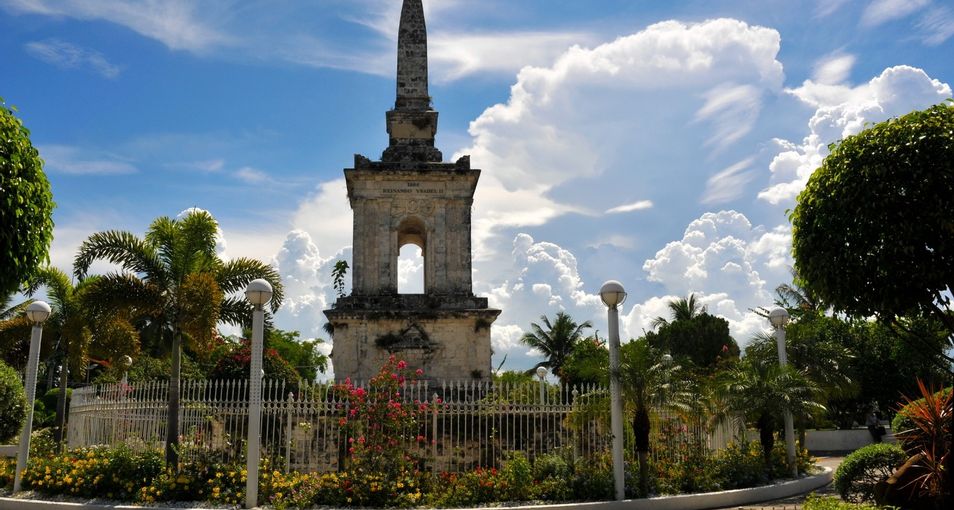Tourism, history, attractions
Tourism
The Philippines is more than 7,000 islands lost in the Pacific Ocean. These are turquoise waves, snow-white beaches, volcanoes, corals, tropical forests, ancient history and ultra-modern skyscrapers. If you’ve been dreaming of a lost paradise, you’ll find it here: less than a third of the islands in the archipelago are inhabited.
The country’s territory is washed by three seas: the South China Sea, the Philippine Sea, and the Sulawesi Sea. The area is of volcanic origin. Now there are more than 30 volcanoes on the islands, some of them are active.
The Philippine islands are conventionally divided into three main groups. The northern part is Luzon, the central part is the Visayas and the southern part is Mindanao. The largest of the Philippine islands: Luzon, Mindanao, Panay, Samar, Palawan, Mindoro, Negros, Leyte, Cebu, Bohol.
The capital of the state – Manila – is located in Luzon. The five largest cities in the country include Quezon City, Manila, Caloocan, Davao and Cebu. The Philippines is a presidential republic. Official languages: English and Filipino.

History
The indigenous population of the modern Philippines were Negroes and Aetas, and they were joined by people from China. From the 7th to the 17th century, this area belonged to the Indo-Malay states. Europeans learned about the archipelago thanks to Fernand Magellan, who discovered the islands in the 16th century. The territory was named after the monarch Philip II and was under the rule of the Spanish crown until the 18th century.
At the end of the 19th century, as a result of the Spanish-American War, the Philippines came under the possession of the United States. After a long struggle for independence, the state received the status of autonomy, and in 1946 it became sovereign.
>
Attractions
The capital of the Philippines is distinguished by its rich architecture. There are many churches and cathedrals, most of which are included in the list of UNESCO heritage sites, as well as a large number of museums. The “heart” of Manila is the Intramuros district. This is the most important historical monument not only of the city, but also of the entire country.
The oldest city in the Philippines is Cebu, which is located on the island of the same name. Magellan was killed here. The cross erected by the traveler has been preserved in the city. His grave is located here. Other attractions of the city include Fort San Pedro, Basilica of San Antonio, cathedral, cathedral museum, Taoist (Chinese) temple.
The cities of the Philippines have a long history, almost every one of them has something to see for discerning tourists. However, the main wealth of the archipelago is, of course, nature.
The Philippines is a country of volcanoes, and one of the most beautiful of them is Mayon, located in a national reserve on the island of Luzon. You can climb the volcano. Provided that you have enough enthusiasm, strength and … courage. Mayon is an active volcano, which is warned by the smoke that constantly rises above it.
One of the main natural attractions of the Philippines is located on the island of Palawan. This is Puerto Princesa – the longest underground river in the world. It flows through a huge cave. The length of the route is about 8 km. Tourists are allowed only on a small part of it, but this is more than enough to get an unforgettable experience from the excursion.
Do you want to admire the most incredible views? Head to the island of Bohol, home to caves, waterfalls and secluded beaches. The visiting card of the island of Bohol and one of the natural treasures of the country as a whole are the famous Chocolate Hills. The panorama of approximately one and a half thousand magnificent hills, “scattered” over the territory of 50 km2, will impress even the most demanding traveler.
This same island is famous for its tiny long-tailed monkeys – the smallest primates in the world.
Climate
The climate of the Philippines is mainly tropical, changing to subequatorial in the southern part of the country. It is hot and humid here, the influence of monsoons is very pronounced. The average air temperature in Manila ranges from +25°C to +30°C throughout the year.
It is best to plan a vacation in the Philippines from March to May – at this time, the weather is dry in most parts of the country. From June to November, the south-west monsoon prevails in the archipelago, bringing rains. The period of the northeast monsoon is the coolest, lasting from November to February.
